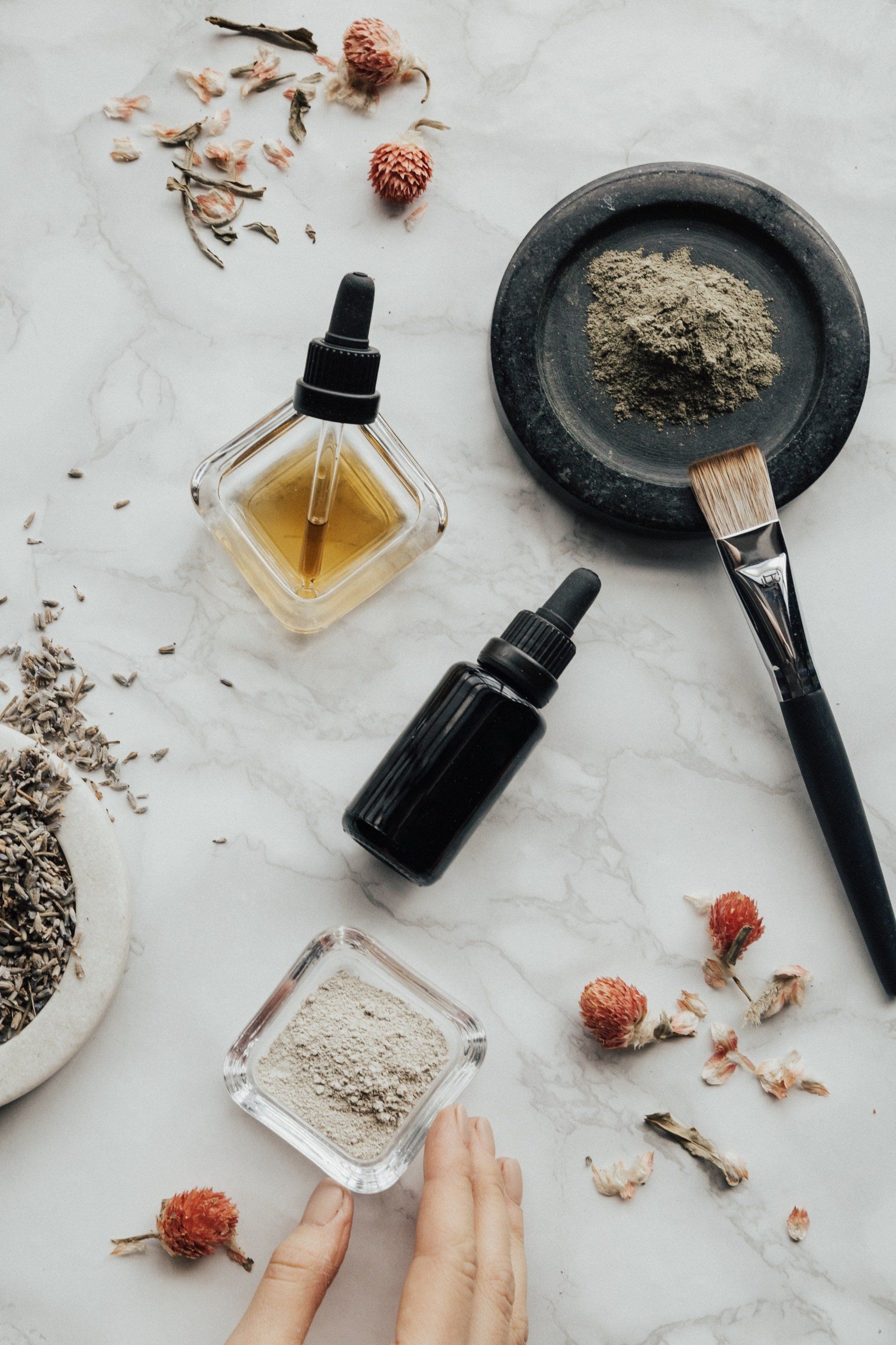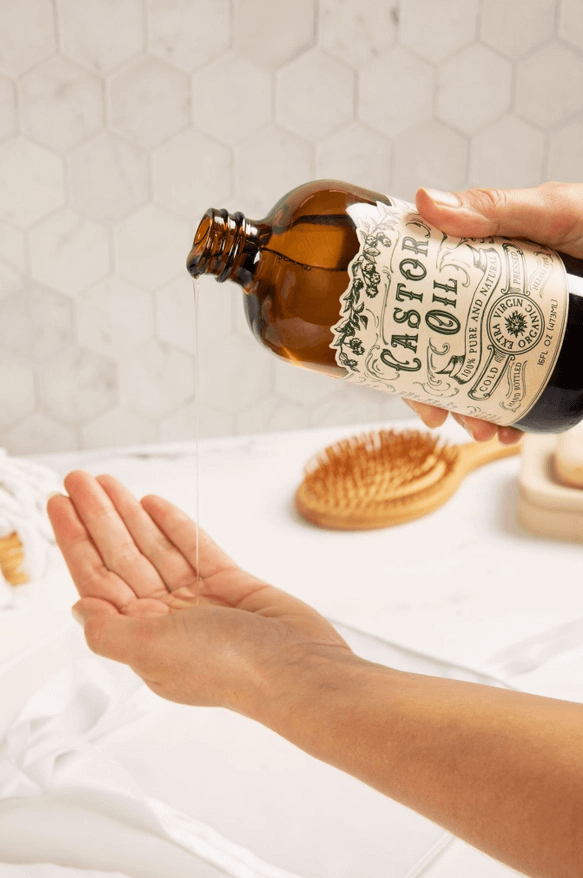The Correct Order to Apply Your High Thyme FARMacy Skin Care Products for Maximum Results
Learn the Best Order in Which to Apply Your Skin Care Products for Maximum Absorption and Effectiveness.

The order in which you apply your skin care products can make a crucial difference to your skin and the overall effectiveness of your skin care routine. Applying your products in the correct order ensures maximum penetration of all the nutrients from your skin care into the layers of your skin.
The general rule is to apply your skin care products in order of thickness - from the thinnest to the thickest.
Step 1: Cleanser
This step is not optional. Remove your makeup and wash your face before applying any products. For ingredients to absorb properly, you need clean skin that’s free of dirt & oil. Skip the makeup wipes – while convenient, they leave behind a layer of residue that can irritate your skin and break you out. Use a cleansing oil, instead. Cleansing oils dissolve makeup without stripping or irritating your skin. Follow up with a gentle soap or cleanser.
Step 2: Toner
Toners help to balance skin, remove any makeup, dirt, and oil that’s left behind after cleansing, and prepare skin for the skin care steps to follow. Toner is optional, but the right toner can make a noticeable difference in how your skin looks, feels, and absorbs serums, treatments, and creams. It can help to balance the skin’s pH levels, minimize the appearance of pores, and reduce shine.
If you use a toner in your skin care routine, apply it to clean, dry skin, then wait a full five minutes (or, at the very least, until it dries) before moving on to the next step. If you don’t wait until the toner dries, you may accidentally neutralize the acids before they have a chance to work.
Step 3: Serum
Serums are just extremely concentrated nutrients, hydrators, and antioxidants. Like toners, serums are also optional, however, they’re often a good first step in leveling up your skin care routine and boosting your skin’s health. For best results, use a vitamin C serum during the day, and opt for a serum filled with hyaluronic acid while you sleep.
Step 4: Eye Cream
Eye creams tend to be lighter/thinner than face moisturizers, so make sure to apply them before your creams and oils. Eye creams are not necessary for most people. If you’re using a moisturizer and sunscreen, your eye area is likely already getting the TLC it needs. However, applying eye cream can reduce the appearance of fine lines and wrinkles over time. If you choose to include an eye cream in your skin care routine, look for an eye cream that has a rollerball applicator and includes caffeine as an ingredient for the daytime. The cold steel ball helps with fluid retention, especially if you keep the container in the fridge between uses. Caffeine helps temporarily constrict and tighten puffy eyes. At night, opt for a product high in antioxidants, which improve the appearance of dark circles and minimize the appearance of wrinkles by helping to rehydrate the delicate skin around the eyes while you sleep.
Step 5: Spot Treatment
Regardless of when you apply your spot treatment (day or night), make sure to apply it before your moisturizer so it can really penetrate your skin. Apply a thin layer, then wait at least a full minute for it to dry. Then, to prevent the spot treatment from becoming a full-face treatment, apply your moisturizer around the spots first. When your face is covered, apply a layer of moisturizer directly over the spot treatment to seal it in without spreading it around.
Step 6: Moisturizer
Like cleansing, this step is not optional. Always moisturize. Twice a day. No matter your skin type - No matter what. It’s the only thing that’ll keep your skin barrier healthy and happy. A moisturizer not only infuses your skin with hydration, but it also helps trap in all the products underneath to make the ingredients even more effective.
Look for a light, gentle moisturizer for the morning - ideally with sunscreen in it. Let it absorb for at least a full five minutes before applying makeup (if this is the end of your skincare routine and makeup is your next step). Night creams typically have a heavier texture to deeply moisturize skin while you sleep. Your skin repairs itself the most at night, so night creams often feature active ingredients like acids and retinol to promote skin cell turnover.
Step 7: Retinol
Retinol is a type of retinoid, which is made from vitamin A. It absorbs into your skin to speed up cell turnover, which causes fresher, smoother-looking, less wrinkled skin over time. Retinoids trigger collagen production and cellular exfoliation, which means they’ll also fade dark spots, smooth scars, clear pores, prevent breakouts, and brighten skin.
If you’re new to retinoids, make sure to start slow to mitigate the initial adjustment period, and be sure to check your night cream for added retinoids - doubling up may cause serious inflammation.
Step 8: Oil
Face oils seal in all the ingredients and moisture you just applied to your face to keep them from evaporating as quickly. On their own, oils don’t moisturize your skin that well, but when you layer them over products, they help increase your routine’s efficacy while also leaving skin soft and smooth. Oils can easily penetrate moisturizers, serums, and treatments, but no products can penetrate an oil, which means they need to be applied last. Oils aren’t just for dry skin. Certain oils, like rose-hip and jojoba, can decrease excess oil in acne-prone skin, while marula and aloe oils can soothe sensitive, easily irritated skin.
Step 9: Sunscreen
The last step…sunscreen. The bare minimum SPF you need on your face is SPF 30.
While some products are best applied at night (like retinol) or in the morning (like vitamin C), your daily routine will generally be the same, always starting with a cleanser, and then layering your skincare products from thinnest to thickest. Remember also to apply products with the highest percentage of active ingredients first, so that they are absorbed first. Not only does order impact efficacy but failing to follow the proper order could result in wasted time and, even worse, wasted money.
Share
A High Thyme FARMacy Blog











